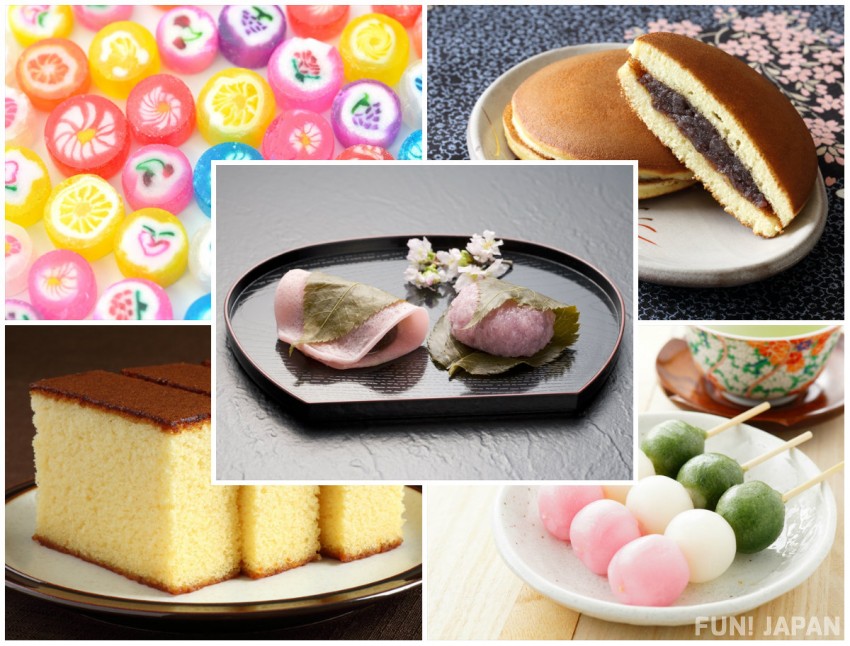
“Wagashi” are traditional Japanese sweets. If we break down the kanji, “wa” means Japanese, and “gashi” means sweets. Many are beautiful and mouth watering just to look at, but have you tried eating any before? We’ll be introducing various different types of wagashi. There may even be a few you’ve seen or eaten before!
Wagashi Made from Mochigome
Let’s take a look at some of the most well-known wagashi, which are enjoyed as an everyday snack or used for special occasions by Japanese people, such as mochi, daifuku, dango, ohagi, and more.
Wagashi That Are Filled with Anko and Wrapped in Mochi
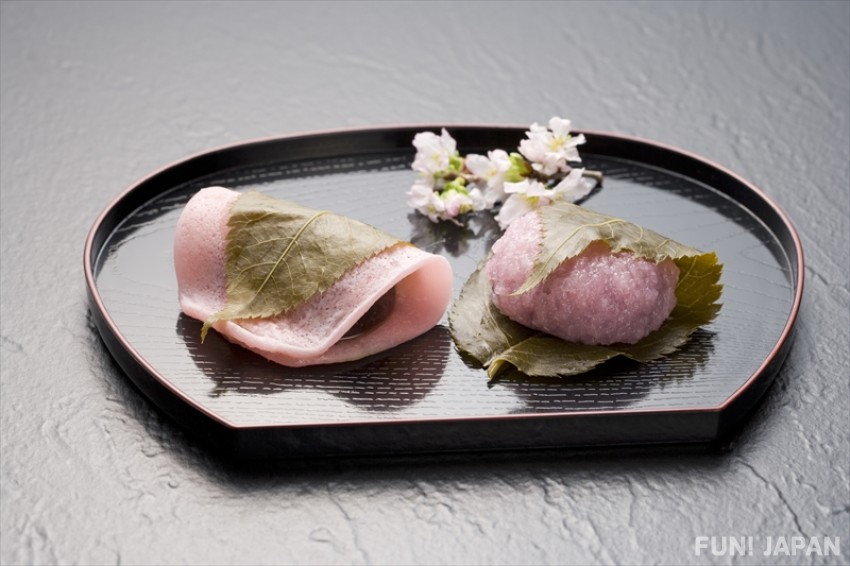
Anko wrapped in mochi is called “daifukumochi”, and there’s another types of mochi wrapped in an oak leaf referred to as “kashiwamochi.” Kashiwamochi is often eaten during a Japanese holiday every May to celebrate the growth of boys called “Dango no Sekku.” When spring is on the way toward the end of February, plenty of stores have their shelves lined with sakuramochi, a wagashi with anko wrapped in mochi. There are two types of sakuramochi: one is made with flour (as shown in the photo on the left), and another with domyoji rice flour (as shown in the photo on the right). They’re both popular in Japan, but people’s tastes greatly differ.
Wagashi Made with Mochi and Covered in Anko
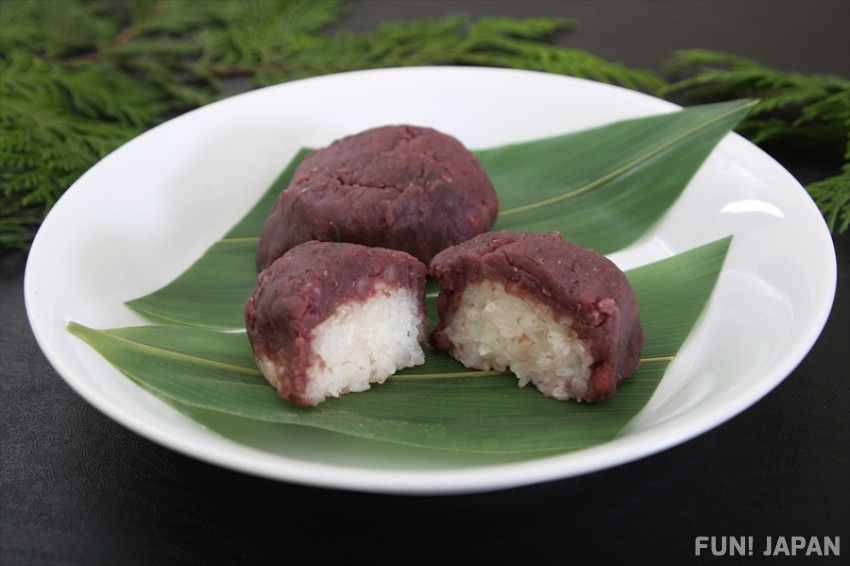
Another variety of wagashi combines mochi covered in anko called “ohagi” which is still handmade at homes in the countryside. There are two types of anko: a smooth type, called “koshian”, and a kind that isn’t smooth with some of the bean’s shell still intact, called “tsubuan.” Japanese people are split on which variety they prefer. Depending on the region, some ohagi replace anko with kinako (soybean powder) or sesame.
Dango: An Adorable Treat

Dango are mochi made into bite-sized balls. The picture above shows them on a skewer, but there are types of dango that aren’t skewered as well. There are a plethora of varieties of dango, so we recommend you check out our article about them.
Monaka
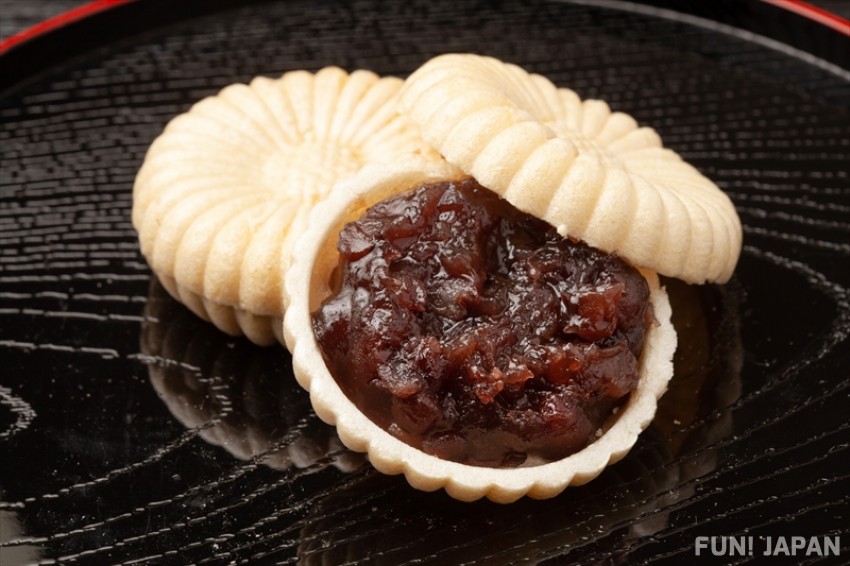
Monaka are made with mochi that has been stretched and made thin, cooked and made into a shell, and then filled with anko. Although the previous wagashi we introduced were sticky, monaka are crunchy.
Wagashi Made with Flour
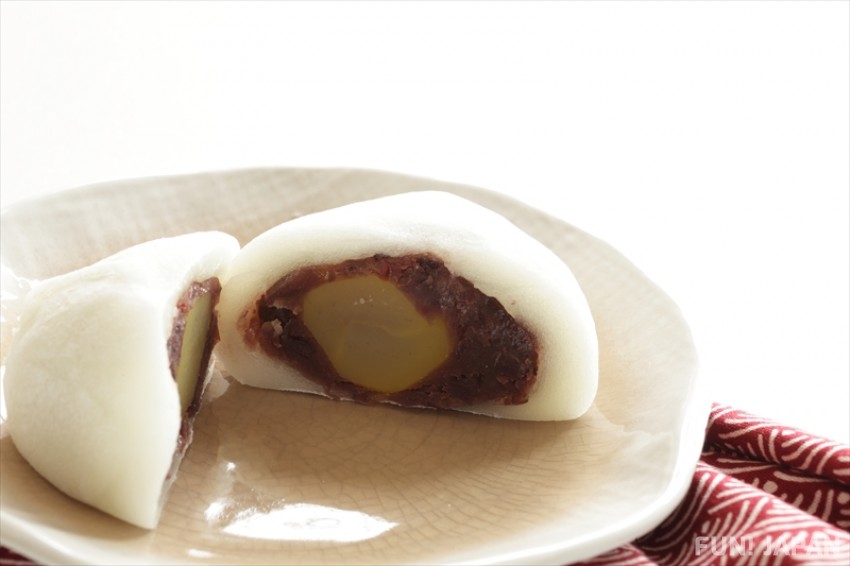
This wagashi is made by using kneaded flour as a crust, filling the center with anko, and then steaming it. It is said it developed as a variation of the Chinese mantou and baozi. Long ago, it was common to put chestnuts in the center, but recently, placing strawberries in the center has become popular.
Dorayaki: A Famous Anime Treat
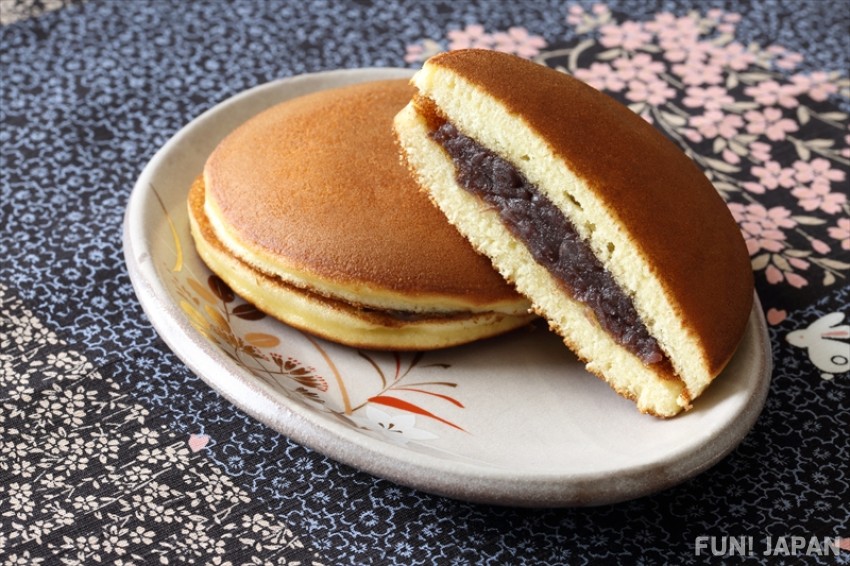
Dorayaki are made from flat and round pancake-like outer crusts with anko sandwiched in the center. This is a wagashi you can easily buy at the supermarket. There are varieties that even use chestnut, butter, and whipped cream as a filling.
Castella

This wagashi was originally a dessert brought to Japan via Portugal that changed to suit Japanese tastes. Nagasaki is famous as a maker of castella. It combines flour, eggs, and sugar, but nowadays, honey has even been thrown into the mix. There are even varieties that are green because matcha is mixed in, brown chocolate flavor,
Senbei: The Salty Wagashi

There is another type of wagashi called “senbei” that uses kneaded flour and rice flour dough, which is then stretched until thin, and then baked or fried. You can often see senbei in convenience stores or supermarkets in salt and soy sauce flavors, sometimes with pieces of dried seaweed wrapped around it. For a deeper look into different types, take a look at our article that talks all about senbei.
An Artistic Wagashi Combining Anko and Potato
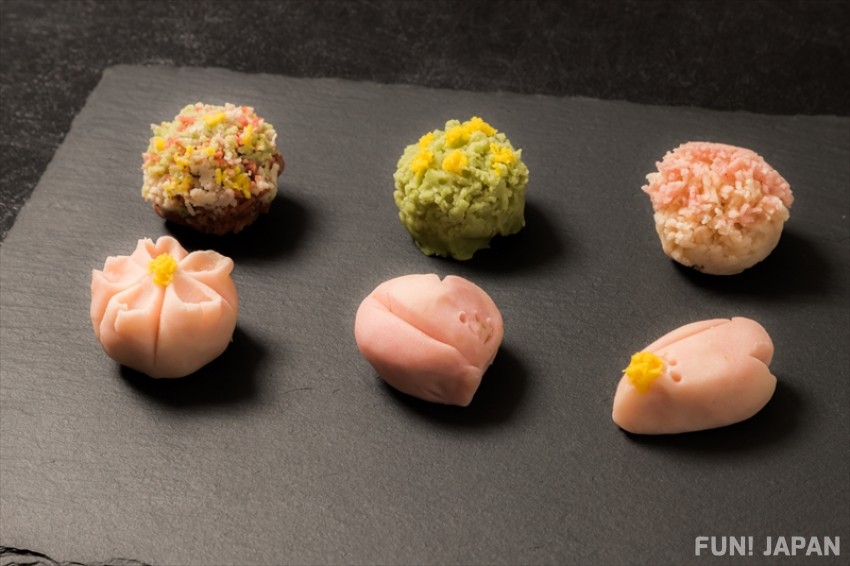
These beautiful wagashi are called “nerikiri.” Nerikiri are made using koshian (white or black), sugar, Japanese yams, shiratamako, and potato starch which is then mixed and then formed and cut into with a small wooden utensil. The shapes and designs are often inspired by the seasons in which they’re made. Wagashi artisans make them carefully, one-by-one, by hand.
Candies are Common the World Over, So What Sets Ame Apart?
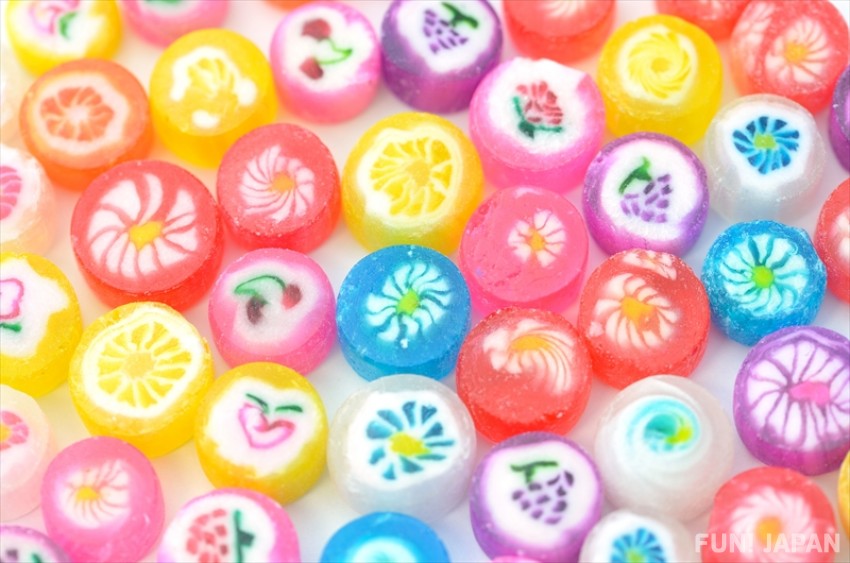
“Ame” is a type of Japanese candy that is made of up to 10% water. There are many types of ame, but they are generally split into hard type and soft type. The traditional method in which they’re made combines starch syrup, sugar, and different flavorings. Kokutou-ame, hakka ame, and nikka ame are a few of the variations. Soft ame are made by combining starch syrup, sugar, bleaching powder, soybean powder, and powdered an which is then kneaded. Caramels which use butter are also considered a soft type of ame. Let’s take a look at the different types of ame Japan has to offer.
Konpeito
This rock sugar candy is circular and bumpy on the surface. It is made with molasses and flour.
Kintaro-ame
No matter where you cut this long stick-like wagashi, you will always see Kintaro’s face. Kintaro is the protagonist of an ancient Japanese tale. Nowadays, this wagashi comes in different designs, such as flowers or fruit. A brand called papabubble makes kintaro-ame with cute pictures in the center.
Chitose-ame
This wagashi is around 1.5 cm thick and 1 meter long. It is often given to children to pray for their health and growth during the Japanese Shichi-go-san celebration. “Chitose” uses the kanji for 1000 and years of age, so that is what this candy is also thought to give someone good health and the strength to get through life.
Wagashi with a Jelly-like Texture
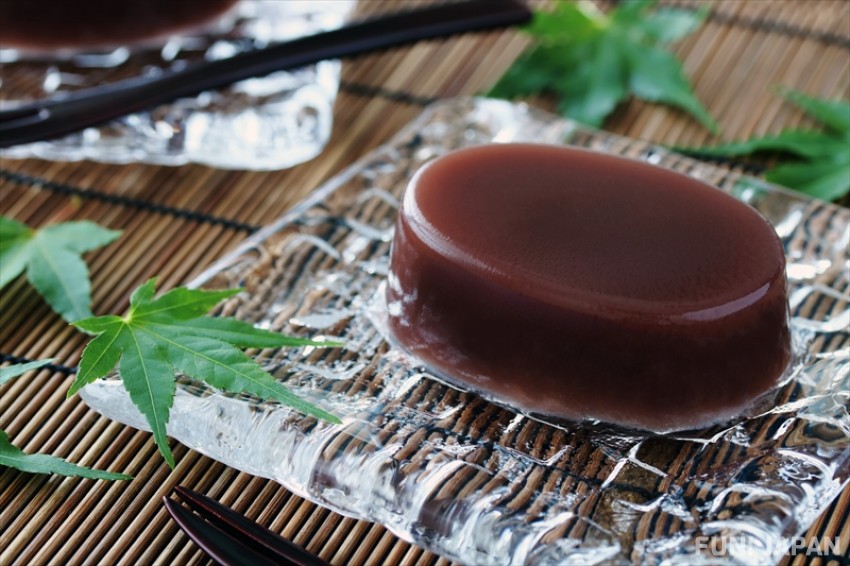
“Yokan” is a traditional wagashi combining anko made from azuki and kanten which is then solidified. If a lot of kanten is used, the yokan will become the harder neriyokan, while if less is used, it will become the softer mizuyokan. Neriyokan is a wagashi that can be eaten throughout the year, however, during the hot summer months, the cool and refreshing mizuyokan is a refreshing treat.
We hope you enjoyed this look into various types of wagashi and learned something new along the way!
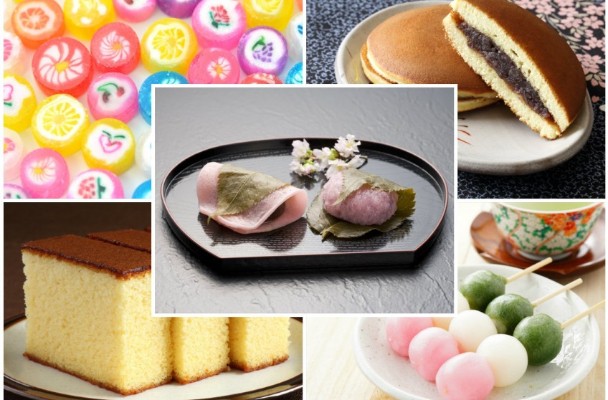
Comments